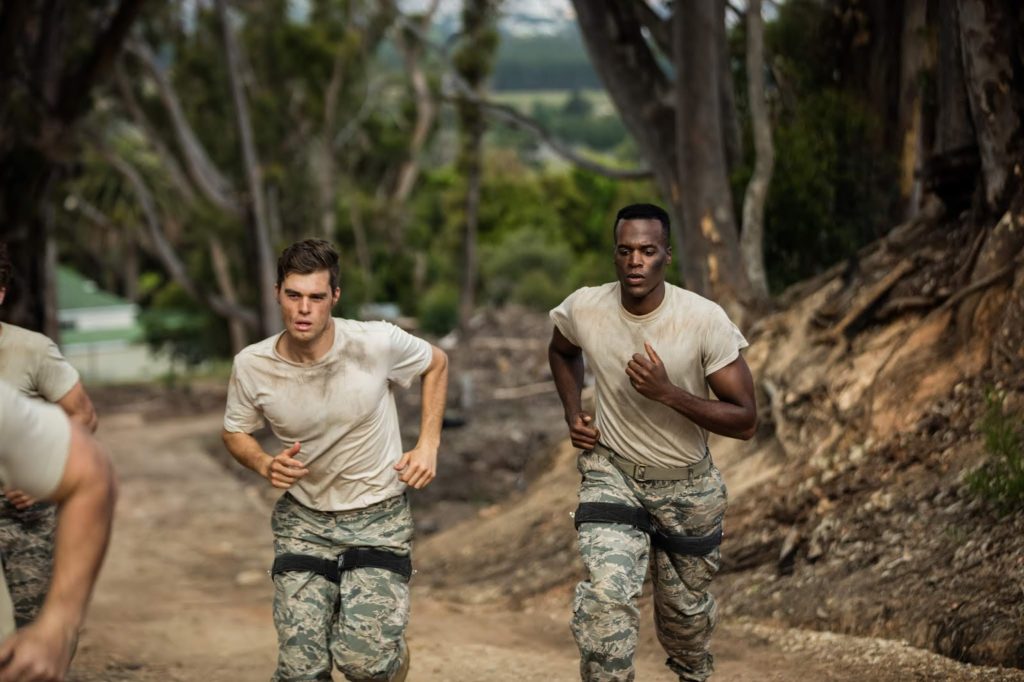Fall 2022
Physical Impact of Stress on Tactical Athletes

Post-traumatic stress disorder (PTSD) is an important public health and military problem since PTSD symptoms are thought to occur in as many as 15 to 20% of individuals exposed to combat.
However, the temporal course of PTSD development is difficult to quantify in an experimental setting, according to MK Taylor et. al., ‘Physical Fitness Influences Stress Reactions to Extreme Military Training,’ Military Medicine, Vol. 173, Issue 8, August 2008.
The purpose of Taylor’s study was to examine whether physical fitness influences the impact of stressful events during military survival training, hypothesizing that physical fitness would buffer these stress reactions and that this observed effect would be mediated through attenuations in trait anxiety.
“There is substantial literature documenting the beneficial effects of physical activity, exercise, and/or fitness relative to stress reactivity, anxiety, depression, as well as neurogenesis, and cognitive function,” Taylor wrote. “Georgiades et al., for example, studied the effects of exercise and weight loss on mental stress-induced cardiovascular responses in individuals with high blood pressure. After six months, participants in an exercise group and participants in a behavioral weight loss group (including exercise) had lower levels of systolic blood pressure, diastolic blood pressure, total peripheral resistance, and heart rate both at rest and during mental stress, compared with inactive controls.”
Taylor found that aerobic fitness was inversely associated with the impact of stressful events, and the relationship may be mediated by fitness-related attenuations in trait anxiety.
In a separate study conducted by Taylor in 2020, entitled ‘Trauma Exposure and Functional Movement Characteristics of Male Tactical Athletes,’ Journal of Athletic Training, he explored the associations of combat and trauma exposure with functional movement (FM) characteristics of male tactical athletes, and the confounding influences of age and physical injury history as well as the mediating role of bodily pain.
Below is an excerpt from Taylor’s 2020 study, involving the associations of combat and trauma exposure with FM characteristics of male tactical athletes, namely US Navy Explosive Ordnance Disposal (EOD) personnel.

Chronic physical stress increases the risk of musculoskeletal injury. For example, load carriage was implicated in 1 in 5 injuries of the back and lower limbs in the military setting, with muscular stress identified as the mechanism of injury in more than half of these events. In fact, single load-carriage events have been reported to result in a high incidence of lower extremity injuries in military personnel and recreational hikers alike. Similarly, stress fractures are prevalent among military members, particularly in training environments. To date, studies of stress fractures in athletes have included only small samples, which cannot be directly compared with a military population. Military and tactical organizations typically use physical training to address these threats, which is a rational strategy in light of solid evidence linking fitness to decreased injury risk.
Paradoxically, physical training is also a profound source of injury in the military sector, likely due to excessive training volumes and inadequate rest. Jones and Hauschild identified physical injury as the leading cause of medical encounters across the US military services, half of which were caused by physical training, exercise, or sports participation. Clearly, we need to determine complementary factors in tactical athletes that decrease injury risk and are modifiable with training.
Functional movement characteristics are potentially modifiable and may help to decrease injury risk in tactical athletes. Some attention has been given to measures of fundamental movement patterns and dynamic balance as univariate predictors of injury in sport participants and tactical athletes with varied results.
Factors that have been routinely cited as influencing functional movement among sport participants and tactical athletes include age, body composition, flexibility, and previous injury. Yet, these are unlikely to be the sole determinants. In fact, psychological antecedents of physical performance and injury risk are increasingly being recognized in athletes. In one such study, self-reported fear predicted hop-test performance and isometric leg strength in athletes returning to sport after anterior cruciate ligament reconstruction.
» ALSO SEE: Fuel Timing to Optimize Performance
Trauma exposure is a significant, psychologically relevant factor that shapes a tactical athlete’s occupational and life history. Such trauma exposure could include surviving a natural disaster, childhood physical abuse, sexual abuse, or physical assault. These types of events may exacerbate acute stress responses, predict cognitive impairment and poor physical health, and disrupt pain processing. It is, therefore, conceivable that trauma exposure may influence FM characteristics in tactical athletes. However, it is also likely that older tactical athletes have sustained more trauma exposure and have poorer FM characteristics than their younger counterparts. Furthermore, traumatic exposure may co-occur with physical injury, which may also disrupt FM. Finally, bodily pain is empirically linked to trauma exposure and FM and, hence, may function as a mediator.
To promote successful injury treatments and recoveries, clinicians might consider incorporating a metric of trauma exposure into patient intake assessments as well as treatment and rehabilitation plans. Such a multidisciplinary approach could optimize patient care and health outcomes.



